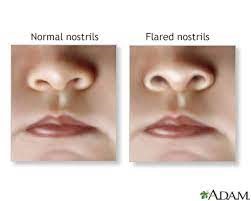A nurse is caring for a client who is 1 day postoperative following a total thyroidectomy.
Complete the following sentence by using the lists of options.
The client is at highest risk for developing
The Correct Answer is {"dropdown-group-1":"B","dropdown-group-2":"D"}
The client is at highest risk for developing hypocalcemia as evidenced by the total calcium level of 8.0 mg/dL (normal range 9.0 to 10.5 mg/dL).
Explanation:
After a total thyroidectomy, there is a risk of hypocalcemia due to potential damage or removal of the parathyroid glands, which regulate calcium levels in the body. The laboratory result indicating a total calcium level of 8.0 mg/dL, which is below the normal range, supports this risk. Hypocalcemia can lead to symptoms such as tingling, muscle cramps, or more severe complications like cardiac arrhythmias if not addressed promptly.
Nursing Test Bank
Naxlex Comprehensive Predictor Exams
Related Questions
Correct Answer is B
Explanation
A. Heart rate 136/min is a normal finding for a newborn. The normal range of heart rate for a newborn is 100 to 160/min.
B. Nasal flaring is an abnormal finding for a newborn. Nasal flaring indicates respiratory distress and may be caused by conditions such as pneumonia, meconium aspiration, or congenital heart defects.
C. Transient strabismus is a normal finding for a newborn. Transient strabismus is a temporary misalignment of the eyes that occurs due to weak eye muscles and poor coordination. It usually resolves by 3 to 6 months of age.
D. Overlapping of sutures is a normal finding for a newborn. Overlapping of sutures is caused by molding of the skull during delivery and allows the head to fit through the birth canal. It usually resolves within a few days after birth.

Correct Answer is D
Explanation
A. Encouraging oral fluids is an important intervention for a child who has a fever, as it helps prevent dehydration and electrolyte imbalance. However, it is not the priority intervention, as it does not address the risk of infection transmission to other clients or staff.
C. Applying topical calamine lotion may help soothe the itching and discomfort caused by the vesicles, but it is not the priority intervention, as it does not prevent infection transmission or treat the underlying cause of the fever.
B. Administering acetaminophen as an antipyretic may help reduce the fever and provide symptomatic relief for the child, but it is not the priority intervention, as it does not prevent infection transmission or treat the underlying cause of the fever.
D. Initiating transmission-based precautions is the priority intervention, as it protects other clients and staff from exposure to the infectious agent that causes the vesicles and fever. The nurse should wear gloves, gown, mask, and eye protection when caring for the child, and place them in a private room or cohort them with other clients who have similar symptoms.
Whether you are a student looking to ace your exams or a practicing nurse seeking to enhance your expertise , our nursing education contents will empower you with the confidence and competence to make a difference in the lives of patients and become a respected leader in the healthcare field.
Visit Naxlex, invest in your future and unlock endless possibilities with our unparalleled nursing education contents today
Report Wrong Answer on the Current Question
Do you disagree with the answer? If yes, what is your expected answer? Explain.
Kindly be descriptive with the issue you are facing.
